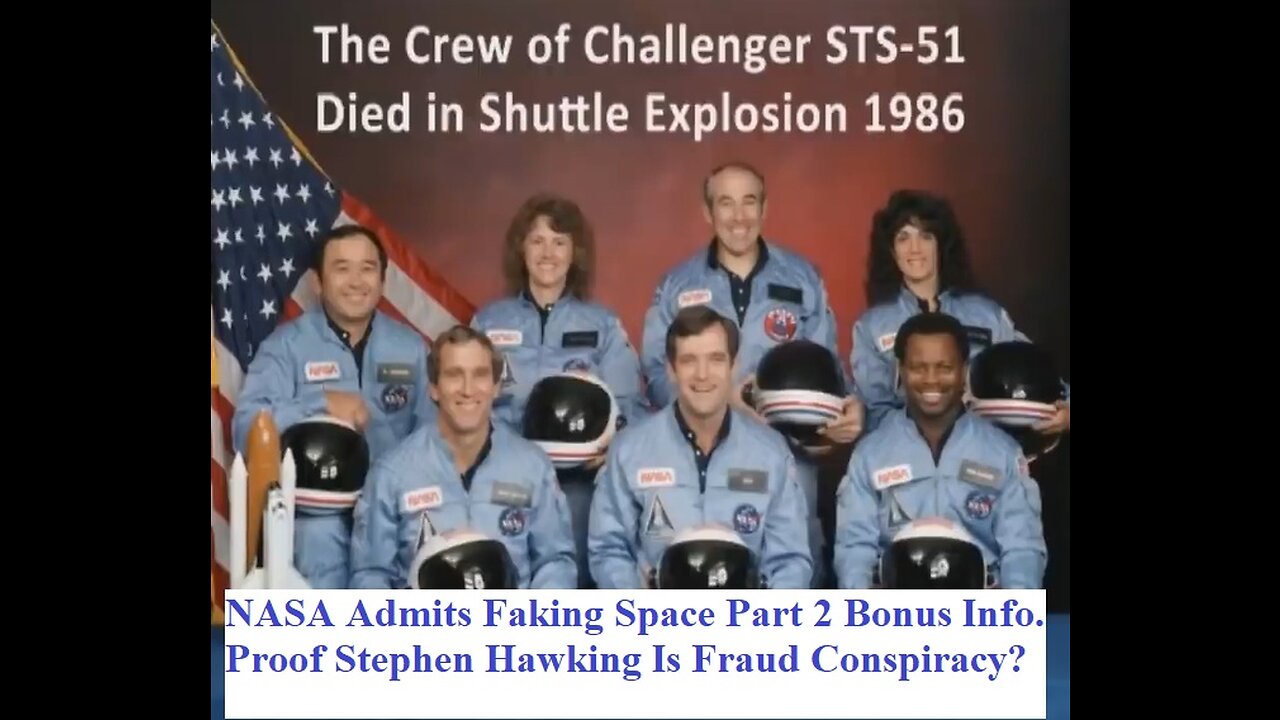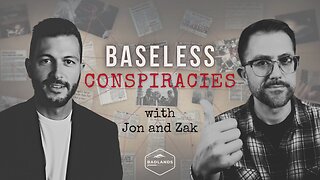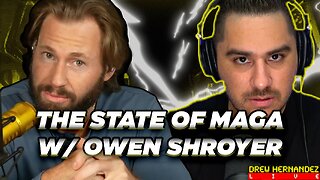Premium Only Content

NASA Admits Faking Space Part 2 Bonus Proof Stephen Hawking Is A Fraud Conspiracy
NASA Admits Faking Space Part 2 The Space Program and shows provable deception in the space program. NASA is a corrupt government organization. It gets worse. NASA was started to create the illusion of going into so-called (non-existent) "outer space". The truth is that no one or nothing has ever been to the fantasy known as "outer space".
NASA has successfully launched 166 crewed flights, but three have ended in failure, causing the deaths of seventeen crew members in total: Apollo 1, STS-51-L (the Challenger disaster) killed seven crew members in 1986, and STS-107 (the Columbia disaster) killed seven more in 2003. The accomplishments of Apollo are among humankind's greatest, with six missions landing men on the moon between 1969 and 1972, the only time humans have ventured onto another celestial body. However, the program was marred by NASA's first tragedy on the ground (Apollo 1) and a near tragedy in space (Apollo 13). In December 2022, NASA astronauts wrapped up successful repairs at the International Space Station after a rare Christmas Eve spacewalk to fix an equipment cooling system.
A CHRONOLOGY OF DEFINING EVENTS IN NASA HISTORY, 1958-1998
See Part One - For Start Of The Text 4 This Post.
NASA Admits Faking Space Part 1 The Space Program Is Faked Yes It's A Conspiracy
2 Dec. 1993 Astronauts Richard O. Covey and Kenneth D. Bowersox piloted Space Shuttle Endeavour (STS-61) on a highly successful mission to repair the optics of the Hubble Space Telescope (HST) and perform routine servicing on the orbiting observatory. Following a precise and flawless rendezvous, grapple, and berthing of the telescope in the cargo bay of the Shuttle, the Endeavour flight crew, in concert with controllers at Johnson Space Center, Houston, Texas, and Goddard Space Flight Center, Greenbelt, Maryland, completed all eleven planned servicing tasks during five extravehicular activities for full accomplishment of all STS-61 servicing objectives. This included installation of a new Wide Field & Planetary Camera and sets of corrective optics for all the other instruments, as well as replacement of faulty solar arrays, gyroscopes, magnetometers, and electrical components to restore the reliability of the observatory subsystem. The Endeavour then provided HST with a reboost into a 321-nautical-mile, nearly circular orbit. Re-deployment of a healthy HST back into orbit using the shuttle robotic arm occurred at 5:26 a.m. EST on 10 Dec., and the telescope was once again a fully operational, free-flying spacecraft with vastly improved optics. Orbital verification of HST's improved capabilities occurred in early Jan., well ahead of the March schedule. Endeavour, the newest of the orbiters, was named after the 18th century vessel captained by British explorer Capt. James Cook. The new Shuttle craft took its maiden voyage in May 1992.
25 Jan.-3 May 1994 After launch from Cape Canaveral, Florida, the joint Department of Defense/NASA Clementine mission mapped most of the lunar surface at a number of resolutions and wavelengths from Ultra Violet to Infrared. The spacecraft was launched on 25 Jan., at 16:34 local time, and the nominal lunar mission lasted until the spacecraft left lunar orbit on 3 May. A malfunction in one of the on-board computers on 7 May at 14:39 UTC (9:39 AM EST) caused a thruster to fire until it had used up all of its fuel, leaving the spacecraft spinning at about 80 RPM with no spin control. The spacecraft remained in geocentric orbit and continued testing the spacecraft components until the end of mission. Perhaps the most important scientific finding of the mission was the possibility of an abundant supply of water on the Moon that would make establishment of a self-sustaining lunar colony much more feasible and less expensive than presently thought. Study of lunar samples revealed that the interior of the Moon is essentially devoid of water, so no underground supplies could be used by lunar inhabitants. However, the lunar surface is bombarded with water-rich objects such as comets, and scientists have suspected that some of the water in these objects could migrate to permanently dark areas at the lunar poles, perhaps accumulating to useable quantities. Analysis of data returned from a radio-wave experiment performed by Clementine revealed that deposits of ice exist in permanently dark regions near the south pole of the Moon. Initial estimates suggested that the volume of a small lake exists, 1 billion cubic meters.
3-11 Feb. 1994 Astronauts Charles F. Bolden and Kenneth S. Reightler, Jr., flew Space Shuttle Discovery (STS-60) on a historic mission featuring the first Russian cosmonaut to fly on a U.S. mission in space, Mission Specialist Sergei K. Krikalev, veteran of two lengthy stays aboard the Russian Mir Space Station. This mission underlined the newly inaugurated cooperation in space between Russia and the U.S., featuring Russia's becoming an international partner in the international space station effort involving the U.S. and its international partners.
3-11 Feb. 1995 Exactly one year after a major cooperative flight with the Russians in STS-60, NASA's Space Shuttle Discovery, this time STS-63, flew another historic mission featuring the flyby of the Russian Mir Space Station. It also featured the first time that a woman pilot, Eileen M. Collins, flew the Space Shuttle. Vladimir Titov is also aboard, the first Russian to be launched aboard a U.S. spacecraft.
27 Jun.-7 Jul. 1995 Twenty years after the world's two greatest spacefaring nations and Cold War rivals staged a dramatic linkup between piloted spacecraft in the Apollo-Soyuz Test Project during the summer of 1975, the space programs of the United States and Russia again met in Earth orbit when the Space Shuttle Atlantis docked to the Mir Space Station. The STS71 mission by Atlantis was the first of seven planned shuttle/Mir linkups between 1995 and 1997, including rendezvous, docking, and crew transfers. Atlantis docked with Mir on 29 Jul., and the combine crew of astronauts and cosmonauts performed several experiments. At the end of joint docked activities on 4 Jul., two Russian cosmonauts lifted to the Mir by the shuttle, assumed responsibility for operations of the Mir station. At the same time, the Mir18 crew, who had been aboard the station since 16 Mar. 1995-Commander Vladimir Dezhurov, Flight Engineer Gennady Strekalov, and American astronaut Norm Thagard-joined the STS71 crew for the return trip to Earth. Thagard returned home with the American record for a single space flight with more than 100 days in space. The previous record had been held by the Skylab4 crew with 84 days in 19731974. Thagard broke that record on 6 Jun. 1995.
11-20 Nov. 1995 This mission by the Space Shuttle Atlantis carried up and attached a Russian-built docking port and orbiter docking system to the Mir space station for use in future shuttle dockings.
28 Nov. 1995 A McDonnell-Douglas MD-11-equipped with a propulsion controlled aircraft (PCA) system developed by NASA's Dryden Flight Research Center, McDonnell Douglas Aerospace, Pratt & Whitney Aircraft, and Honeywell, Inc.-made the first-ever safe, fully automated landing of a transport aircraft using only engine thrust for control. NASA Dryden engineers and pilots began developing the system in the wake of a long series of failures of hydraulic flight control systems in the 1970s, three of which resulted in crashes claiming the lives of over 1,200 people. The system evolved through landings by NASA research pilot Gordon Fullerton of a NASA F-15 research aircraft using a similar system in April 1993 and of the MD-11 in August 1995 with a prototype system that required him to use cockpit knobs and thumbwheels aided by a still-developing software system. The system used for landings on 28 and 30 November 1995 relieved the pilot of virtually all manual manipulation beyond engaging the auto-land system. The PCA system has the potential of providing aircraft a back-up system to enable safe landings in the event the airplane loses its hydraulic controls.
7 Dec. 1995 Galileo: Probe released into Jupiter's atmosphere.
22-31 Mar. 1996 In this Atlantis shuttle mission to dock with the Russian space station Mir, the United States left astronaut Shannon Lucid, the first U.S. woman to fly on the station, aboard for a total of five months.
7 Aug. 1996 NASA announced that a team of its scientists had uncovered evidence, however not conclusive proof, that microscopic life may have once existed on Mars. The team of scientists recounted the meteor's history, found in Antarctica in 1984 and why they suspect it is from Mars. The 4.2 pound, potato-sized rock, identified as ALH84001, is approximately the same age as the Red Planet. When ALH84001 formed as an igneous rock about 4.5 billion years ago, Mars was much warmer and probably contained oceans hospitable to life. Then, about 15 million years ago, a large asteroid hit the Red Planet and jettisoned the rock into space where it remained until it crashed into Antarctica about 11,000 B.C. The nine-member team of NASA and Stanford University scientists, led by Johnson Space Center scientists David S. McKay and Everett K. Gibson, Jr., presented three compelling, but not conclusive, pieces of evidence that suggest that fossil-like remains of Martian microorganisms, which date back 3.6 billion years, are present in ALH84001. During their two-and-a-half year investigation, the JSC team found trace minerals in the meteor that are usually associated with microscopic organisms. They also used a newly developed electron microscope to uncover possible microfossils that measure between 1/100 to 1/1000 the diameter of a human hair. Finally, discovered organic molecules called polycyclic aromatic hydrocarbons (PAHs) in ALH84001, usually resulting when microorganisms die and their complex organic molecules breakdown. They called for additional research from other scientists either to confirm or refute these findings.
13 Aug. 1996 Data from NASA's Galileo probe at Jupiter revealed that the gas giant's moon, Europa, may harbor "warm ice" or even liquid water-key elements in life-sustaining environments. Many scientists and science fiction writers have speculated that Europa-in addition to Mars and Saturn's moon Titan-is one of the three planetary bodies in this Solar System that might possess, or may have possessed, an environment where primitive life can exist. Galileo's photos of Europa were taken during a flyby of Ganymede some 96,000 miles away from Europa. They reveal what look like ice floes similar to those seen in Earth's polar regions. The pictures also reveal what look like giant cracks in Europa's ice where warm water "environmental niches" may exist. Although NASA officials stressed that the photos do not conclusively prove anything, they do think that the images are exciting, compelling, and suggestive.
16-26 Sep. 1996 The Atlantis docked with Mir and retrieved Shannon Lucid and left John Blaha for continued joint operations aboard the Russian station. Astronaut Lucid set a new record for an American living in space and broke the world's record for a woman living in space by spending 181 days aboard the Russian Mir Space Station. President Clinton presented Lucid, who conducted microgravity and life sciences experiments aboard the Mir, with the Congressional Space Medal of Honor in an early December ceremony, citing Lucid "for her contributions to international cooperation in space...Shannon Lucid is an explorer in the best tradition of those who dare to challenge the unknown."
13 Jan. 1997 NASA scientists announced the discovery of three black holes in three normal galaxies, suggesting that nearly all galaxies may harbor supermassive black holes which once powered quasars (extremely luminous nuclei of galaxies), but now are quiescent. This conclusion was based on a census of 27 nearby galaxies carried out by NASA's Hubble Space Telescope and ground-based telescopes in Hawaii, which were used to conduct a spectroscopic and photometric survey of galaxies to find black holes which have consumed the mass of millions of Sun-like stars. The key results are: (1) supermassive black holes are so common that nearly every large galaxy has one, (2) a black hole's mass is proportional to the mass of the host galaxy, so that, for example, a galaxy twice as massive as another would have a black hole that is also twice as massive, (3) the number and masses of the black holes found are consistent with what would have been required to power the quasars.
11-21 Feb. 1997 In a record five extravehicular activity (EVA) operations, astronauts from the shuttle Discovery performed the second Hubble Space Telescope servicing mission. This mission replaced the near-infra red camera (NICMOS) and the two-dimensional spectrograph and repaired insulation on the telescope.
20 Feb. 1997 The space probe Galileo exploring Jupiter and its moons discovered Icebergs on Europa. Images captured during Galileo's closest flyby of Europa showed features of the Jovian moon, lending credence to the possibility of hidden, subsurface oceans. The findings generated new questions about the possibility of life on Europa.
1-7 May 1997 A fleet of spacecraft with the International Solar Terrestrial Physics (ISTP) program watched for a break in Comet Hale-Bopp's plasma ion tail. Amateur astronomers around the world were also put on watch the first week of May 1997 when space scientists predicted based on earlier data from ISTP spacecraft estimated that Comet Hale-Bopp's ion tail likely would be disrupted when it enters a region around the Sun known as the "current sheet." Scientists explained that the disruption was a complicated interaction between the comet and the Sun's influence and magnetic fields. The comet first appeared in the spring and excited astronomers for its high visibility and ready analysis.
4 Jul. 1997 The inexpensive Mars Pathfinder (costing only $267 million) landed on Mars, after its launch in December 1996. A small, 23-pound robotic rover, named Sojourner, departed the main lander and began to record weather patterns, atmospheric opacity, and the chemical composition of rocks washed down into the Ares Vallis flood plain, an ancient outflow channel in Mars' northern hemisphere. This vehicle completed its projected milestone 30-day mission on 3 Aug. 1997, capturing far more data on the atmosphere, weather, and geology of Mars than scientists had expected. In all, the Pathfinder mission returned more than 1.2 gigabits (1.2 billion bits) of data and over 10,000 tantalizing pictures of the Martian landscape. The images from both craft were posted to the Internet, to which individuals turned for information about the mission more than 500 million times through the end of July.
25 Aug. 1997-Present Real-time data from NASA's Advanced Composition Explorer were incorporated into the daily weather forecasting system by the end of the year. NOAA's Space Environment Center in Boulder, Colorado, used data from this system to track solar disturbances. Positioned between the Sun and the Earth, the spacecraft intercepts solar winds and geomagnetic activity and allows forecasters to warn users such as satellite operators, power control centers, and others of the threat to their electronic systems resulting from sudden fluctuations in solar energy reaching Earth.
11 Sep. 1997 The Mars Global Surveyor space probe, launched in December 1996, entered orbit at the red planet. The spacecraft's magnetometer, detected a magnetic field on 15 Sep. The existence of a planetary magnetic field has important implications for the geological history of Mars and for the possible development and continued existence of life on Mars. The magnetic field had important implications for the evolution of Mars. Planets like Earth, Jupiter, and Saturn generate their magnetic fields by means of a dynamo made up of moving molten metal at the core. This metal is a very good conductor of electricity, and the rotation of the planet creates electrical currents deep within the planet that give rise to the magnetic field. A molten interior suggests the existence of internal heat sources, which could give rise to volcanoes and a flowing crust responsible for moving continents over geologic time periods.
25 Sep.-6 Oct. 1997 In this seventh docking mission with the Russian space station Mir, the shuttle Atlantis delivered three Russian air tanks and nine Mir batteries (170 pounds each). It also delivered a Spektor module repair kit (500 pounds), which enabled the station crew to begin serious repairs damaged in the Progress collision of 25 Jun. The mission also delivered 1,400 pounds of water; 1,033 pounds of U.S. science items; and 3,000 pounds of Russian supplies. During this mission Russian cosmonauts Parazynski and Titov conduct an EVA to retrieve four environmental effects space exposure experiments (MEEPS) on Mir's module. Atlantis also flew around Mir to assess the damage to the station. The astronaut Michael Foale also departed for Earth after a stay of nearly five months and was replaced by astronaut David Wolf.
15 Oct. 1997 The international Cassini space probe mission left Earth bound for Saturn atop an Air Force Titan IV-B/Centaur rocket in a picture-perfect launch at Cape Canaveral, Florida. With the European Space Agency's Huygens probe and a high-gain antenna provided by the Italian Space Agency, Cassini will arrive at Saturn on 1 July 2004.
Dec. 1997 Scientists using the joint European Space Agency/NASA Solar and Heliospheric Observatory (SOHO) spacecraft have discovered "jet streams" or "rivers" of hot, electrically charged plasma flowing beneath the surface of the Sun. These new findings will help scientists understand the famous 11-year sunspot cycle and associated increases in solar activity that can disrupt the Earth's power and communications systems.
6 Jan. 1998 Lunar Prospector was launched on this date for a one-year polar mission to explore the Moon, especially whether or not water ice is buried inside the lunar crust. Developed as part of the Discovery program of frequent, low-cost missions, Lunar Prospector carried a small payload of only five instruments. Besides water, Lunar Prospector was also to look for other natural resources, such as minerals and gases, that could be used to build and sustain a future human lunar base or in manufacturing fuel for launching spacecraft from the Moon to the rest of the Solar System. The spacecraft's Gamma Ray Spectrometer will also collect a large amount of scientific data about chemical composition of the lunar surface and will measure the Moon's magnetic and gravitational fields. Its Alpha Particle Spectrometer will sniff out small quantities of gases that leak out from the lunar interior. Collectively, the scientific data that Prospector will send back to Earth will help researchers construct a more complete and detailed map of the Moon. In Mar. 1998 Lunar Prospector detected the presence of water ice at both lunar poles, using data from the spacecraft's neutron spectrometer instrument. The lunar water ice is estimated at an overall range of eleven million to 330 million tons of lunar water ice dispersed over 3,600 to 18,000 square miles of water ice-bearing deposits across the northern pole, and an additional 1,800 to 7,200 square miles across the southern polar region. Furthermore, twice as much of the water ice mixture was detected by Lunar Prospector at the Moon's north pole as at the south.
29 Jan. 1998 An International Space Station agreement among 15 countries met in Washington to sign agreements to establish the framework for cooperation among the partners on the design, development, operation, and utilization of the Space Station. Acting Secretary of State Strobe Talbott signed the 1998 Intergovernmental Agreement on Space Station Cooperation, along with representatives of Russia, Japan, Canada and participating countries of the European Space Agency (Belgium, Denmark, France, Germany, Italy, the Netherlands, Norway, Spain, Sweden, Switzerland and the United Kingdom). Three bilateral memoranda of understanding were also signed by NASA Administrator Daniel S. Goldin separately with his counterparts: Russian Space Agency General Director Yuri Koptev, ESA Director General Antonio Rodota and Canadian Space Agency President William (Mac) Evans.
12 Mar. 1998 Development of the X-38, a spacecraft design planned for use as a future International Space Station emergency crew return "lifeboat," passed a major milestone today with a successful first unpiloted flight test. The first X-38 atmospheric test vehicle was dropped from under the wing of NASA's B-52 aircraft at the Dryden Flight Research Center, Edwards, CA, at 11:30 a.m. EST and completed a descent from a 23,000 foot altitude at 11:38 a.m. EST. The test focused on the use of the X-38's parafoil parachute, which deployed as planned within seconds after the vehicle's release from the B-52 and guided the test craft to landing. Atmospheric tests of the X-38 will continue for the next two years using three increasingly complex test vehicles. The drop tests will increase in altitude to a height of 50,000 feet and include longer flight times for the test craft prior to deployment of the parafoil. In 2000, an unpiloted space test vehicle is planned to be deployed from a Space Shuttle and descend to a landing. The X-38 crew return vehicle is targeted to begin operations aboard the International Space Station in 2003. Eventually, the X-38 will become the first new human spacecraft designed to return humans from orbit in more than twenty years, and it is being developed at a fraction of the cost of past human space vehicles. The primary application of the new spacecraft would be as an International Space Station "lifeboat," but the project also aims at developing a design that could be easily modified for other uses, such as a possible joint U.S. and international human spacecraft that could be launched on expendable rockets as well as the Space Shuttle.
May 28, 1998 The Hubble Space Telescope gave humanity its first direct image of what is probably a planet outside our solar system-one apparently that has been ejected into deep space by its parent stars. Located in a star-forming region in the constellation Taurus, the object called TMR-1C, appears to lie at the end of a strange filament of light that suggests it has apparently been flung away from the vicinity of a newly forming pair of binary stars. At a distance of 450 light-years, the same distance as the newly formed stars, the candidate protoplanet would be ten thousand times less luminous than the Sun. If the object is a few hundred thousand years old, the same age as the newly formed star system which appears to have ejected it, it was estimated to be two to three times the mass of Jupiter, the largest gas giant planet in our Solar System.
Is The Crew of the Exploded Challenger Space Shuttle Still Alive? (Yes They Are.)
Conspiracy theory claims the seven astronauts supposedly killed in the 1986 Space Shuttle Challenger explosion are quietly living out their lives in the U.S.A.
https://www.snopes.com/fact-check/challenger-crew-alive/
On the morning of 28 January 1986, NASA lost its first astronauts to an in-space accident when all seven members of the Space Shuttle Challenger crew were lost when a booster engine failed and caused the Challenger to break apart just 73 seconds after launch. Killed in that accident were Teacher-in-Space payload specialist Sharon Christa McAuliffe; payload specialist Gregory Jarvis; and astronauts Judith A. Resnik, mission specialist; Francis R. (Dick) Scobee, mission commander; Ronald E. McNair, mission specialist; Mike J. Smith, pilot; and Ellison S. Onizuka, mission specialist.
Nearly thirty years later, in May 2015, the online world contemplated a conspiracy rumor questioning whether the Challenger crew was in fact still alive, as evidenced by the fact that persons resembling those original crew members (at the approximate ages they would be now), and bearing similar or identical names, are still living and working in the United States:
What if I were to tell you that most, if not all, of Challenger's 7 crew members are still alive and thriving in their new professions, contrary to what we've been told?
It's one thing that one of the Challenger's crew members resembles someone alive today. For that, we can chalk it up to a coincidence.
Itâ??s another thing entirely that SIX members of the Challenger crew have doppelgängers who are alive, in some cases with exactly the same names (Richard Scobee, Michael J. Smith, Judith Resnick, Sharon McAuliffe). What are the chances of that?
You don't have to be an expert in mathematics to know that those odds defy statistical probability.
This exercise is an amusing example of how easy it is to weave a compelling conspiracy theory out of a few suggestive elements, but its premise defies credulity: NASA faked (for no explicable reason) the deaths of seven astronauts in a catostrophic shuttle accident, then allowed those astronauts to openly live out the rest of their lives back home without even taking the basic steps of disguising their physical appearances or real names — and nobody noticed it until nearly 30 years later.
All this conspiracy exercise really demonstrates is that you can sometimes find two people with the same name who bear a passing resemblance to each other. To wit:
Born on May 19, 1939, Commander Francis Richard Scobee was 46 when he died in the Challenger explosion. He would be 75 years old if he were alive today.Strangely, there's a man also named Richard Scobee, the CEO of a Chicago marketing-advertising company called Cows in Trees, who bears a striking resemblance (factoring in the 30-year timelapse) to Commander Richard Scobee — same high forehead, same eyebrows, same wide-set eyes that are slightly tilted down in their outer corners.
These two Scobees are similar in appearance, but there are distinct differences that can't be accounted for by the passage of years (such as the difference in ear shapes). Moreover, at the time that Francis Richard Scobee, the former Air Force pilot, was training with NASA as an astronaut and serving as an instructor pilot for the shuttle's 747 carrier aircraft, Richard Scobee, the current CEO of Cows in Trees, was serving as CEO and President of The Marketing Edge, Inc. in Chicago. The same man couldn't have been holding down two such disparate jobs, in two widely separated geographic locations, at the same time.
Born on Oct. 21, 1950, Challenger's mission specialist Ronald McNair, the second African-American astronaut, with a Ph.D. in physics, would be 64 years old if he had not perished in the space shuttle explosion. If Ronald (l) were still alive today, he would look just like this pic of his brother, Carl (r).
Yes, the late Ronald McNair looked a lot like his brother, Carl, as many siblings do (but they're still easy to tell apart, as Carl has an obvious gap in his front teeth that Ronald didn't). And this proves what, exactly? It might be a curiosity if there were no record of the existence of "Carl McNair" until after the Challenger explosion, but that isn't the case. Are we supposed to believe that Ronald secretly took over his brother's identity after the Challenger "accident" and somehow engineered the disappearance of the real Carl? Of course, the real point of this comparison is that the creators of this conspiracy theory couldn't find a similarly named doppelgänger for Ronald McNair other than his own brother.
Another Challenger mission specialist, Ellison Onizuka, the first Japanese-American astronaut, also has a lookalike brother named Claude. Born on June 24, 1946 in Hawaii, Ellison would be 68 years old today if he had not died in the Challenger explosion. If Ellison were still alive, he would look just like this pic of his younger brother Claude — same eyebrows, same eyes, same crow's feet wrinkles, same nose, even the same hair-parting.
Again, the shocking revelation that someone looked a lot like his brother. And again, the creators of this theory couldn't find a similarly named doppelgänger for one of the Challenger astronauts other than his own brother.
And now we pause for a pertinent question: Why has Gregory Jarvis been completely skipped over in this accounting of dead Challenger astronauts who are seemingly carrying on today as if nothing had ever happened to them? The simple answer is that it's because someone couldn't find any online photographs of another Gregory Jarvis who credibly resembles payload specialist Gregory Jarvis.
Born on April 5, 1949, Challenger mission specialist Judith Arlene Resnik, with a Ph.D. in electrical engineering, was the first Jewish American astronaut to go into space and the second female American astronaut. She would be 66 years old today if she had not died in the explosion.If she were alive today, it is not difficult to imagine that after 29 years, astronaut Judith Resnik would look like Arthur Liman Professor of Law Judith Resnik at Yale Law School — dark curly hair, dark eyes, same eyebrow shape, same lines on both sides of the face extending up from the jaw.
Nobody familiar with either person would confuse these two Judith Resniks with each other, as they have very different facial structures. And while Judith Resnik the electrical engineer was engaged in work and study at RCA, NIH, Xerox, and NASA in the 1970s and 80s, Judith Resnik the lawyer was teaching law school classes at Yale and USC. How someone could have been simultaneously (not to mention secretly) holding down two completely disparate jobs at opposite ends of the country remains unexplained.
Born on Sept. 2, 1948, Sharon Christa McAuliffe was a social studies teacher at Concord High School in New Hampshire when she was selected from more than 11,000 applicants to participate in the NASA Teacher in Space Project. If Challenger had not exploded, she would be the first teacher in space. If she had not died in the Challenger disaster, McAuliffe would be 66 years old today.Well, there's a Sharon A. McAuliffe, an adjunct professor at Syracuse University College of Law, who kinda looks like an older astronaut McAuliffe, factoring in the 30 years timelapse. Look at the cowlick of hair, sweeping from the center of their hairlines to the left side of their foreheads.
Same problems: These two Sharon McAuliffes don't really look all that much alike, and while Christa McAuliffe (she went by her middle name rather than "Sharon") the schoolteacher was obtaining degrees in education from Framingham State College (Massachusetts) and Bowie State University (Maryland), teaching social studies at Concord High School (New Hampshire), and training with NASA, Sharon McAuliffe the lawyer was attending Syracuse University and working for an accounting firm in Syracuse (New York).
This conspiracy narrative concludes by claiming that there are no records in the Social Security Death Index (SSDI) for any of the seven Challenger astronauts:
There is no Social Security Death Index for all 7 Challenger crew members. As far as Social Security is concerned, Francis Richard Scobee, Michael J. Smith, Ronald McNair, Ellison Onizuka, Judith Resnik, Greg Jarvis, and Sharon Christa McAuliffe are still alive.
First of all, the SSDI is not comprehensive: That database indexes most &mdash but not all — persons who have died since 1936, had a Social Security Number (SSN), and whose death has been reported to the Social Security Administration. More important, this claim about missing records is not true: entries for at least four of the Challenger crewmembers can easily be found in SSDI searches.
All in all, we have four Challenger astronauts who looked somewhat like persons with similar names who are living today, two Challenger astronauts who looked like their siblings, and one Challenger astronaut who apparently didn't look like anyone else bearing the same name. This conspiracy rumor about still-living "dead" Challenger astronauts is some good tongue-in-cheek fun, but as an actual theory it's sorely lacking in evidence and cohesiveness.
The NASA Glenn Research Center was originally established as the Aircraft Engine Research Laboratory (AERL), part of the National Advisory Committee for Aeronautics (NACA) in 1941.
The laboratory became a national resource for innovations in aircraft engine technology, which influenced commercial and military propulsion systems. The AERL was renamed the Lewis Research Center and became part of the new National Aeronautics and Space Administration (NASA) in 1958. In 1999, NASA Lewis was renamed the John H. Glenn Research Center at Lewis Field.
For decades, our scientists and engineers have advanced technology in both aviation and space exploration. These innovations have given the U.S. a leading role in the aerospace industry.
Timeline
1940s - The Beginning
The National Advisory Committee for Aeronautics (NACA) transforms the site of the National Air Races in Cleveland into a world-class Aircraft Engine Research Laboratory (AERL), which quickly makes contributions to the World War II effort.
1940 – The NACA announces on November 25 that it will build its new lab in Cleveland.
1941 – Groundbreaking ceremony for the AERL takes place on January 23.
1942 – E. Raymond Sharp officially named laboratory manager on December 1.
1943 – First research flight takes place on March 17 with a Martin B-26. AERL dedication ceremony held on May 20.
1944 – First test is performed in the Altitude Wind Tunnel with a jet engine. The Icing Research Tunnel is completed.
1945 – Lab's first supersonic wind tunnels begin operation in June. AERL undergoes major reorganization in October to focus on jet propulsion.
1946 – Post-war visitors include Dwight Eisenhower, Curtis LeMay, Frank Whittle and James Doolittle.
1948 – In honor of the late George Lewis, the lab’s name changed to NACA Lewis Flight Propulsion Laboratory.
1949 – 8-by-6 Foot Supersonic Wind Tunnel begins operation on April 3. First sponsored rocket testing at the lab is conducted for the Navy. Abe Silverstein is appointed chief of research on August 29 and reorganizes the staff.
1950s – New Types of Propulsion
The laboratory’s research activities are reorganized to focus on high energy rocket propellants and nuclear propulsion. The launch of Sputnik in the fall of 1957 leads to the lab’s incorporation into the new NASA space agency.
1950 – New water droplet system perfected in the Icing Research Tunnel.
1951 – Initiation of transonic compressor research.
1952 – Abe Silverstein is appointed associate director. Propulsion Systems Laboratory No. 1 and 2 begins operation.
1953 – Lewis researchers receive safety award for their full-scale aircraft crash investigations.
1954 – First firing of a liquid hydrogen-oxygen engine takes place at the Rocket Lab.
1955 – Neil Armstrong begins his NASA career as a test pilot at Lewis. Silverstein co-authors report on the potential use of liquid hydrogen as a jet fuel.
1956 – The NACA breaks ground at Plum Brook for a nuclear test reactor. Dedication of the 10-by 10-Foot Supersonic Wind Tunnel. 10 x 10 testing of the inlet system for the world’s first supersonic bomber.
1957 – Lewis conducts first flights of a hydrogen-powered aircraft. Lewis staff discusses rocket work and space missions at the NACA’s 1957 Inspection. Lewis staff make recommendations for the NACA’s role in the space program. Rocket Engine Test Facility begins operation.
1958 – Laboratory incorporated into the new NASA space agency as the Lewis Research Center. NASA leases additional acreage at Plum Brook of new Rocket Systems Area facilities. Lewis acquires the West Area property and the Guerin House.
1959 – Launch of Big Joe capsule (assembled at Lewis) for Project Mercury. President Eisenhower approves official NASA seal designed by James Modarelli.
1960s – The Space Program
The center contributes to the space program with a series of tests for Project Mercury, an intensive study into the storage and handling of liquid hydrogen, and management of the Centaur upper-stage rocket. By the late 1960s, the center was again shifting back toward aeronautics.
1960 – Mercury 7 astronauts, including John Glenn, train in Lewis' Multiple Axis Space Test Inertia Facility (MASTIF). Space Nuclear Propulsion Office (SNPO) created with Lewis responsible for engine technology. Retirement of original center director Raymond Sharp.
1961 – Abe Silverstein is named center director. Electric Propulsion Laboratory begins operation. Plum Brook Reactor Facility goes critical for first time.
1962 – Transfer of the Centaur upper stage rocket program to Lewis. Center hosts NASA’s largest public exhibition to date at Public Hall.
1963 – Transfer of the Agena upper stage rocket program to Lewis. Lewis manages first successful Centaur rocket launch (AC-2). NASA formally acquires Plum Brook Station from the Army.
1964 – First edition of Lewis News newsletter is issued. Space Electric Rocket Test (SERT I) conducts the first in-space ion thruster test. Stephen Papell invents magnetic fluids, leading to the creation of a ferrofluids industry. Opening of the Development Engineering Building in the North Area.
1965 – Cryogenic Tank Facility (K Site) begins operation at Plum Brook.
1966 – Atlas Centaur-8 becomes the first successful two-burn Centaur. Atlas-Centaur-10 launches the Surveyor spacecraft to the Moon. Center celebrates its 25th anniversary and hosts an Inspection for 2000 invited guests. Zero Gravity Facility begins operation.
1967 – Irving Pinkel participates in the Apollo 1 fire investigation
1968 – 9-by 15-Foot Low Speed Wind Tunnel begins operation.
1969 – Atlas Centaur rockets launch Mariner 6 and 7 flyby missions to Mars. Bruce Lundin becomes Lewis' third center director. Completion of the Space Power Facility and Space Propulsion Research Facility.
1970s – Quiet Engines and Loud Rockets
Cutbacks to traditional aerospace programs spurred the center to explore new areas of research such as renewable energy and communication satellites. The aero-propulsion work concentrated on noise and emissions reductions. The center’s most high-profile successes during the 1970s were the Titan-Centaur launches of Viking and Voyager spacecraft.
1970 – Launch of the second Space Electric Rocket Test (SERT II). Lewis performs combustion testing to support the Apollo 13 investigation.
1971 – YF-12 Blackbird inlet testing conducted in the 10-by 10-foot Supersonic Wind Tunnel. NASA establishes the Aerospace Safety Research and Data Institute at Lewis.
1972 – Launch (AC-27) of Pioneer 10, the first man-made object to leave the solar system. Propulsion Systems Laboratory No. 3 and 4 begins operation.
1973 – NASA cancels its nuclear programs, resulting in layoffs of hundreds of Lewis employees. Shutdown of Plum Brook Station begins with the closure of the reactor facility. Lewis’ Wind Energy Conversion Workshop spurs wind turbine development program.1974 – First successful launch Titan-Centaur launch sends Helios 1 on mission to the sun.
1975 – Titan-Centaur launches the Viking 1 and 2 spacecraft to Mars. Dedication of the Mod-0A wind turbine at Plum Brook Station.
1976 – Launch of the Lewis-managed Communications Technology Satellite (CTS). Prop testing for the Advanced Turboprop Program begins in the 8-by-6 Wind Tunnel.
1977 – Titan-Centaur launches Voyager 1 and 2 on missions to explore the outer solar system.Cleveland Clinic begins using the Lewis Cyclotron for its Neutron Therapy Program.
1978 – John McCarthy becomes the fourth Lewis center director. Lewis activates the world’s first solar electric village in Schuchuli, Arizona. Dedication of the Lewis Visitors Information Center.
1979 – Peak of Lewis’ wind energy research efforts.
1980s – The Shuttle Era Begins
NASA Lewis goes for major roles in mainstream programs. New programs include the space station power system, the Shuttle/Centaur upper-stage vehicle, and the Advanced Communications Technology Satellite (ACTS).
1980 – Dedication of the Research Analysis Center (RAC). Isidore Warshawsky becomes the first NASA employee with 50 years of service.
1981 – Center is assigned responsibility for the Shuttle-Centaur program.
1982 – Andy Stofan becomes Lewis' fifth center director. Center’s first strategic plan is issued.
1983 – Lewis makes first significant staffing increase in 20 years.
1984 – Center is assigned responsibility for the space station power system.
1985 – Lewis holds first Simulated Shuttle Program for local students.
1986 – Cancellation of the Shuttle-Centaur program. Reactivation of the Space Power Facility begins at Plum Brook.
1987 – The Icing Research Tunnel is designated an ASME Historic Engineering Landmark . John Klineberg becomes Lewis center director. NASA wins Emmy for developing the Communications Technology Satellite.
1988 – Advanced Turboprop team receives Robert J. Collier Trophy on May 13.
1989 – Space Electric Rocket Test (SERT II) is reactivated nearly 20 years after its launch. Dedication of the Power Systems Facility to support the space station program. Atlas-Centaur 68 is the last Lewis-managed commercial Centaur launch.
1990s - A New Name
The Center continues its leading aero-propulsion, space power and space propulsion work. Lewis assumes a lead role in the microgravity program as the program manager for Fluid Physics and Combustion Microgravity Research.
1990 – Larry Ross becomes Lewis center director.
1991 – Center celebrates its 50th anniversary. Dedication of new Edward R. Sharp Employee Center.
1992 – 1-by 1-Foot Supersonic Wind Tunnel reaches 5,000 hours of run time. Joseph Nieberding travels to Moscow to explore the use of Russian spacecraft for the space station. Dedication of the Ohio Aerospace Institute.
1993 – Center given responsibility for propulsion system for the new High Speed Research program. Lewis staff help transition Space Station Freedom into the International Space Station. STS-51 deploys the Advanced Communications Technology Satellite (ACTS).
1994 – Donald Campbell is appointed center director.
1995 – Delivery of Lewis-managed Mir Cooperative Solar Array to Russian space station Mir. Lewis rolls out DC-9 aircraft modified for microgravity research.
1996 – Deployment of Lewis-managed Mir Cooperative Solar Array on Mir.
1997 – Mars Pathfinder lands on the Martian surface with Lewis experiments. Last Lewis-managed Centaur launch sends the Cassini spacecraft toward Saturn.
1998 – Launch of Deep Space I powered by Lewis' NSTAR ion thruster.
1999 – The center is renamed the John H. Glenn Research Center.
2000s – The 21st Century
The center makes key contributions to the Columbia Accident Investigation and Constellation Project. The campus also undergoes transformation with the addition of the Mission Integration Center and the removal of several historic facilities.
2000 – Dedication of the Ballistics Lab in the Materials and Structures Building. Glenn-designed solar arrays delivered to the International Space Station.
2001 – STS-107 crew visits Glenn to train on the Combustion Module-2.
2002 – Graphics and Visualization (GRUVE) Lab and Telescience Support Center facilities open.
2003 – Julian Earls becomes center director. Ballistics Lab performs impact testing for the Columbia accident investigation.
2004 – Center formally acquires the S-3 Viking aircraft.
2005 – Woodrow Whitlow becomes Glenn center director.
2006 – NASA assigns Glenn responsibility for Orion service module.
2007 – Rededication of the Space Power Facility (SPF). Launch of the NSTAR thruster-powered Dawn asteroid mission
2008 – Demolition of the Altitude Wind Tunnel commences. Assembled Ares I-X segments leave Glenn for delivery to Kennedy Space Center.
2009 – Commercial Aviation Safety Team Robert J. Collier Trophy. Glenn-designed Ares I-X Upper Stage Simulator is successfully launched.
2010 – NASA Glenn Visitor Center moves to Great Lakes Science Center. Ramon Lugo becomes center director.
2011 – Dedication of the new main gate and security building.
2012 – Space Communications and Navigation (SCaN) sent to the ISS.
2013 – Jim Free becomes Glenn center director. NEXT thruster completes record-setting 5 1/2-year duration test.
2014 – Glenn dedicates new Mission Integration Center building.
2015 – The center inducts first class into the Glenn Hall of Fame.
2016 – Janet Kavandi becomes center director. Orion Crew Module acoustics testing conducted at the Space Power Facility.
2017 – Glenn celebrates its 75th anniversary.
2018 – Orion spacecraft for Artemis I is tested at the Space Power Facility Groundbreaking for the Research Support Building.
2019 – Software Defined Radio team inducted into Space Technology Hall of Fame.
2020 – Dr. Marla E. Pérez-Davis becomes center director. Plum Brook Station is renamed the Neil Armstrong Test Facility.
What was the space race? The space race was a 20th Century struggle between two nation-states, the Soviet Union (USSR) and the United States (US). The pursuit for both was the domination of space flight technologies. The competition began on 2 August 1955, when the Soviet Union responded to the US announcement of their similar intent to launch artificial satellites.
The space race has its origins in the nuclear arms race between the two nations following the Second World War. Both sides were aided by German missile technology and scientists from their missile programme. The technological advantages required for such power were seen as necessary for national security and political superiority. The space race produced groundbreaking efforts to launch artificial satellites; space probes of the Moon, Venus, and Mars, and human space voyages in low Earth orbit and lunar missions.
The space race between the United States (US) and the Soviet Union (USSR) was a remarkable time in history with many far-reaching achievements in science, space exploration, and technology. This timeline shows the twenty-year competition between the two nations.
Space race timeline
2 August 1955: The USSR responds to the US announcement that they intend to launch the first artificial satellite into space with a satellite of their own.
4 October 1957: The USSR successfully launches Sputnik 1, the first Earth-orbiting satellite in history.
3 November 1957: The USSR successfully launches Sputnik 2, carrying a dog named Laika into space. They become the first nation to successfully send a living organism into orbit.
31 January 1958: The US enter the space race by launching Explorer 1, the first US satellite to reach orbit. It carried experimental equipment that led to the discovery of the Van Allen radiation belt.
1 October 1958: The National Aeronautics and Space Administration (NASA) is created in the US, replacing the National Advisory Committee on Aeronautics (NACA).
18 December 1958: The US launch SCORE, the world's first communications satellite. It captured world attention by broadcasting a pre-recorded Christmas message from US President Dwight D. Eisenhower, becoming the first broadcast of a human voice from space.
2 January 1959: The USSR launches Luna 1, known as the first "cosmic rocket" as it accidentally escaped the orbit of the Moon due to the object having too much speed. Luna 1 becomes the first human-made object to leave the orbit of the Earth and orbit the sun instead.
2 August 1959: The US launches Explorer 6, the world's first weather satellite and obtains the first pictures of Earth from space.
12 September 1959: The USSR launches Luna 2 and accomplishes its mission of creating the first spacecraft to reach the surface of the Moon.
4 October 1959: The USSR launches Luna 3 and succeeds in their mission of sending an object into orbit around the Moon and photographing the far side of the Moon.
19 August 1960: Aboard the Soviet Union's Sputnik 5, the first animals (two dogs, Belka and Strelka) and a range of plants are returned alive from space.
31 January 1961: Ham, a US chimpanzee, becomes the first hominid (or great ape) in space and the first to successfully survive the landing.
12 April 1961: The Soviet Union achieve a clear triumph in the space race. Aboard the Vostok 1, Yuri Gagarin makes a single orbit around the Earth and becomes the first man to reach space. He remained in space for one hour and forty-eight minutes before landing in Saratov Oblast, west Russia.
5 May 1961: The US achieve the first pilot-controlled journey and first American in space with Alan Shepard aboard the Mercury-Redstone 3 (or Freedom 7) spacecraft. On this flight, Shepard did not orbit Earth. He flew 116 miles high. The flight lasted about 15 minutes.
16 June 1963: Valentina Tereshkova becomes the first civilian and first woman in space. She spends almost three days in space, orbiting the Earth 48 times aboard her spacecraft, Vostok 6.
18 March 1965: Alexei Leonov leaves his spacecraft, the Voskhod 2, in a specialized spacesuit and conducts a twelve-minute spacewalk, the first of its kind.
14 July 1965: The US satellite, Mariner 4, performs the first successful voyage to the planet Mars, returning the first close-up images of the Martian surface.
1967: This year proves the most deadly of the space race for both the US and Soviet Union. In January, American astronauts Ed White, Gus Grissom, and Roger Chaffee die when a fire ignited in their Apollo 1 capsule on the launch pad. Only a few months later the Soviet cosmonaut Vladimir Komarov is also killed when the parachute on his Soyuz 1 capsule fails to open on his reentry into Earth's atmosphere.
21 December 1968: US spacecraft Apollo 8 becomes the first human-crewed spacecraft to reach the Moon, orbit it, and successfully return to Earth.
20 July 1969: Neil Armstrong and later Edwin "Buzz" Aldrin become the first men to walk on the Moon while their crewmate Michael Collins continues to orbit the Moon aboard the Apollo 11. This secured a victory for America in the space race with a televised landing witnessed around the world by 723 million people.
11 April 1970: The US Apollo 13 mission is known as the first explosion onboard a spacecraft where the crew survived.
19 April 1971: The USSR launches the first space station. Parts of this spacecraft will become core segments of the International Space Station (ISS) almost thirty years later in November 2000.
1 August 1971: David Scott, commander of the Apollo 15 mission, becomes the first person to drive on the Moon. He's also remembered for paying tribute to the Soviet Union and US astronauts who died in the advancement of space exploration. When walking on the Moon, Scott places a plaque with a list of the dead. Alongside this, he leaves a small aluminium sculpture of an astronaut in a spacesuit, created by Belgian artist Paul Van Hoeydonck.
15 July 1975: With tensions between the US and USSR softening, the first cooperative Apollo-Soyuz mission is launched. With two separate flights, the Apollo and Soyuz spacecraft dock in space and the two commanders Tom Stafford and Alexei Leonov exchange the first international handshake. This act can be seen to symbolically end the space race, paving the way for future joint missions, such as the International Space Station and the Shuttle-Mir programme.
Space race facts
The first animals sent into space were fruit flies
These were carried aboard a Second World War V2 rocket on 20 February 1947. Find out more about the first animals in space
Dogs were sent into space
While the US often sent primates on test flights, the Soviet Union preferred to use dogs. They were seen to be more obedient, and Moscow stray dogs were reckoned to be more equipped to deal with the extreme conditions and potential hunger of space travel.
There is a solar powered satellite
The US Navy's Vanguard 1 was the first solar-powered satellite. Launched on 17 March 1958, it remains the oldest human-made probe in orbit. Although communication with the satellite is now lost, it will stay in space for many years to come.
Yuri Gargarin started a tradition
On the 12 April 1961, the first man in space, Yuri Gagarin asked the bus driver to stop on the route to the launchpad and urinated against the right-hand back tyre of the bus. This act has become a tradition for all astronauts travelling into space. Female astronauts bring vials of their urine to splash on the wheel.
Astronauts were nearly cosmonauts
In the 1950s an ongoing discussion began at NASA between astronauts and cosmonauts. The deputy administrator wanted to name US travellers in space as cosmonauts, the term applied to Russian spacemen. He felt that "cosmos" was more applicable to space travel than just the term used to stars (or "Astro"). However, while he made a clear point, he was outvoted by his peers.
Alan Shepard played golf on the Moon
On 2 February 1971, Alan Shepard became the first human to play golf on the Moon. After smuggling a makeshift golf club aboard his Apollo 14 lunar mission, Shepard hit two balls just before liftoff. Find out about what's been left on the Moon.
The Mercury Seven were the oldest
The Mercury Seven were the group of seven astronauts that piloted all the crewed spaceflights of the Mercury programme, occurring from May 1961 to May 1963. Of the Mercury Seven, John Glenn went on to become a US senator and on 29 October 1998 (while still a senator), he became the oldest person to fly in space at the age of 77.
Apollo 12 was struck by lightning
On 14 November 1969, Apollo 12 was sent on its lunar mission. The launch was the most distressing of the Apollo programme, as a series of lightning strikes just after liftoff temporarily disabled their power and guidance systems. On stepping onto the lunar surface five days later, Conrad joked, "Man, that may have been a small one for Neil, but that's a long one for me."
The last person to walk on the Moon was Eugene Cernan
Cernan was the Mission Commander of the Apollo 17 mission that occurred between 11 and 14 December 11 1972. Only twelve people (all US astronauts) had done so before, and none have done so since. He walked on the Moon with geologist and astronaut, Harrison Schmitt.
Who won the space race?
With no official measure of success, the winner of the space race is a point of controversy. Most historians agree that the space race ended on 20 July 1969 when Neil Armstrong stepped onto the Moon for the first time. As the climax of space history and exploration, the lunar landing led to a triumph for the US.
While the US set a man on the Moon first, their success was fed by a series of pioneering achievements by the Soviet Union. The Space Race can be seen as a climactic comeback for the United States starting in 1968, rather than a decisive victory.
Following the Moon landing, the Soviet Union concentrated their efforts on building a space station. On 7 June 1971, the Soyuz 11 spacecraft successfully docked with the Salyut 1 space laboratory and completed a record 22-day stay - demonstrating that space exploration would continue.
Furthermore, in May 1972, the US and the Soviet Union negotiated an easing of hostile relations. This "thaw" in the cold war led to cooperation between the two nations on future missions, and the space race became a joint venture.
The space race and the Cold War
Following the Second World War in 1946, tensions rose between two of the victors; the Soviet Union (USSR) and the United States (US) The primary source of conflict arose from the struggle between two political beliefs of communism (USSR) and capitalism (US). This conflict became known as the Cold War.
The term cold in this context meant that there was no direct fighting between the two sides, but each sponsored and supported many conflicts across the world. The Cold War lasted until 1991 with the collapse of the Soviet Union.
The space race played a significant part in the Cold War as the Americans and Soviets competed to prove their technological and intellectual superiority by becoming the first nation to put a human into space. From beginning to end, the world's attention was captivated by this contest for dominance.
How did the space race affect the world?
The space race has had a broader impact on society than just space exploration; here are some of the ways the world has changed.
Communication
The Earth is now surrounded by a network of satellites, which provide broadband communications and high-definition television, data used for weather reporting and GPS navigation and positioning. Many of these tools and systems were created and developed during the space race.
Medical
The image processing used in CAT scans and radiography were both initially developed for deep space imaging and photography. NASA's innovations into shock absorbent materials also helped create more functionally dynamic artificial limbs.
Technology
The world's first portable computer and mouse were created for space exploration and adapted for the commercial markets. Even the wireless headsets we use today originate from NASA creating hands-free equipment for astronauts and pilots. One of the classic examples is NASA's creation of the ball-point pen for writing in space. However, the Soviet Union found a cost-effective method of using a pencil.
President Kennedy space race speech
On 12 September 1962, President John F. Kennedy delivered a speech to a large crowd gathered at the Rice Stadium in Houston, Texas. The speech called for an ambitious space exploration programme that included not just missions to put astronauts on the Moon, but various other space projects such as communications and weather satellites. The quotation "We choose to go to the Moon" is remembered as the tagline from the speech. The US would succeed in this mission eight years later, but Kennedy would not be around to see it. He was assassinated two years later in Dallas, Texas on 22 November 1963.
What even started the space race?
Following the Second World War, the United States and the Soviet Union competed to see who had the best technology in space. This included events such as the first satellite to orbit Earth, the first human-crewed spacecraft and the first person to walk on the Moon. The space race was considered vital by the two nations as it showed the world which country had the superior scientific, economic and political systems.
NASA Admits Faking Space Part 1 The Space Program Is Faked Yes It's A Conspiracy
NASA Admits Faking Space Part 1 The Space Program and shows provable deception in the space program. NASA is a corrupt government organization. It gets worse. NASA was started to create the illusion of going into so-called (non-existent) "outer space". The truth is that no one or nothing has ever been to the fantasy known as "outer space".
-
 4:04
4:04
What If Everything You Were Taught Was A Lie?
2 days agoMuslim's And Far Left America And Pedophile's Love Sharia Law Better Than American Laws
1.34K -
 18:36
18:36
GritsGG
14 hours agoTrios is BACK! Slamming Lobby w/ Mr. Bobby Poff!
4.72K -
 LIVE
LIVE
Lofi Girl
3 years agolofi hip hop radio 📚 - beats to relax/study to
317 watching -
 2:48:21
2:48:21
FreshandFit
15 hours agoNarcissistic Mid European Got Called Out And THIS Happened...
216K83 -
 1:48:12
1:48:12
Badlands Media
15 hours agoBaseless Conspiracies Ep. 161: The Human Hunting Files
85.4K32 -
 1:56:01
1:56:01
Inverted World Live
8 hours agoHome is Where The Great Pacific Garbage Patch is | Ep. 148
71.6K7 -
 5:32:24
5:32:24
Drew Hernandez
1 day agoTHE CURRENT STATE OF MAGA 2025 W/ GUEST: OWEN SHROYER
40K25 -
 34:21
34:21
Stephen Gardner
9 hours agoThey have NO IDEA what they just UNLEASHED!!
40.4K71 -
 3:08:15
3:08:15
Decoy
9 hours agoFinally
52.3K15 -
 2:55:01
2:55:01
TimcastIRL
9 hours agoTrump Calls Democrat RETARDED, Whistleblower EXPOSES Democrat FRAUD | Timcast IRL
241K72